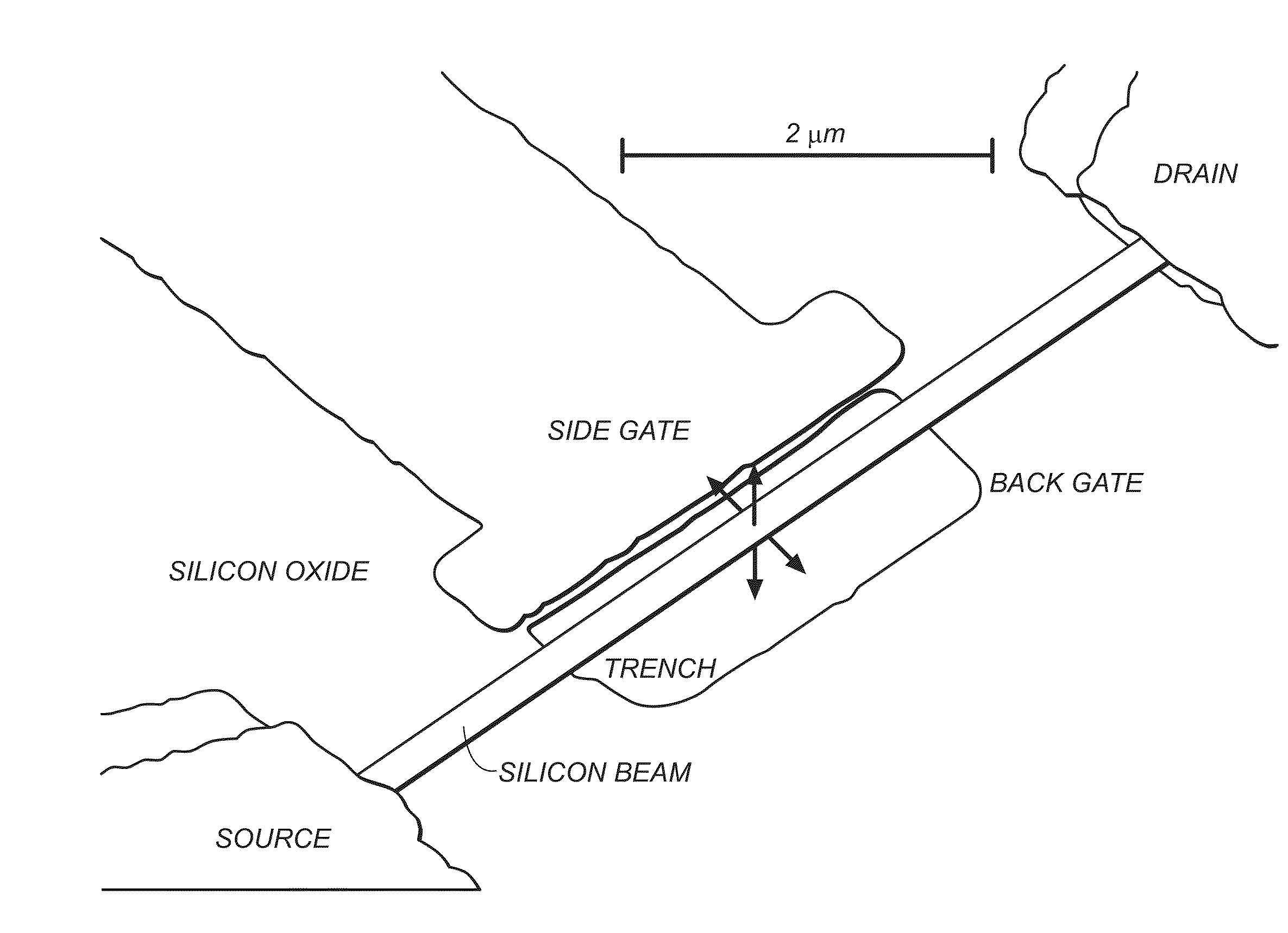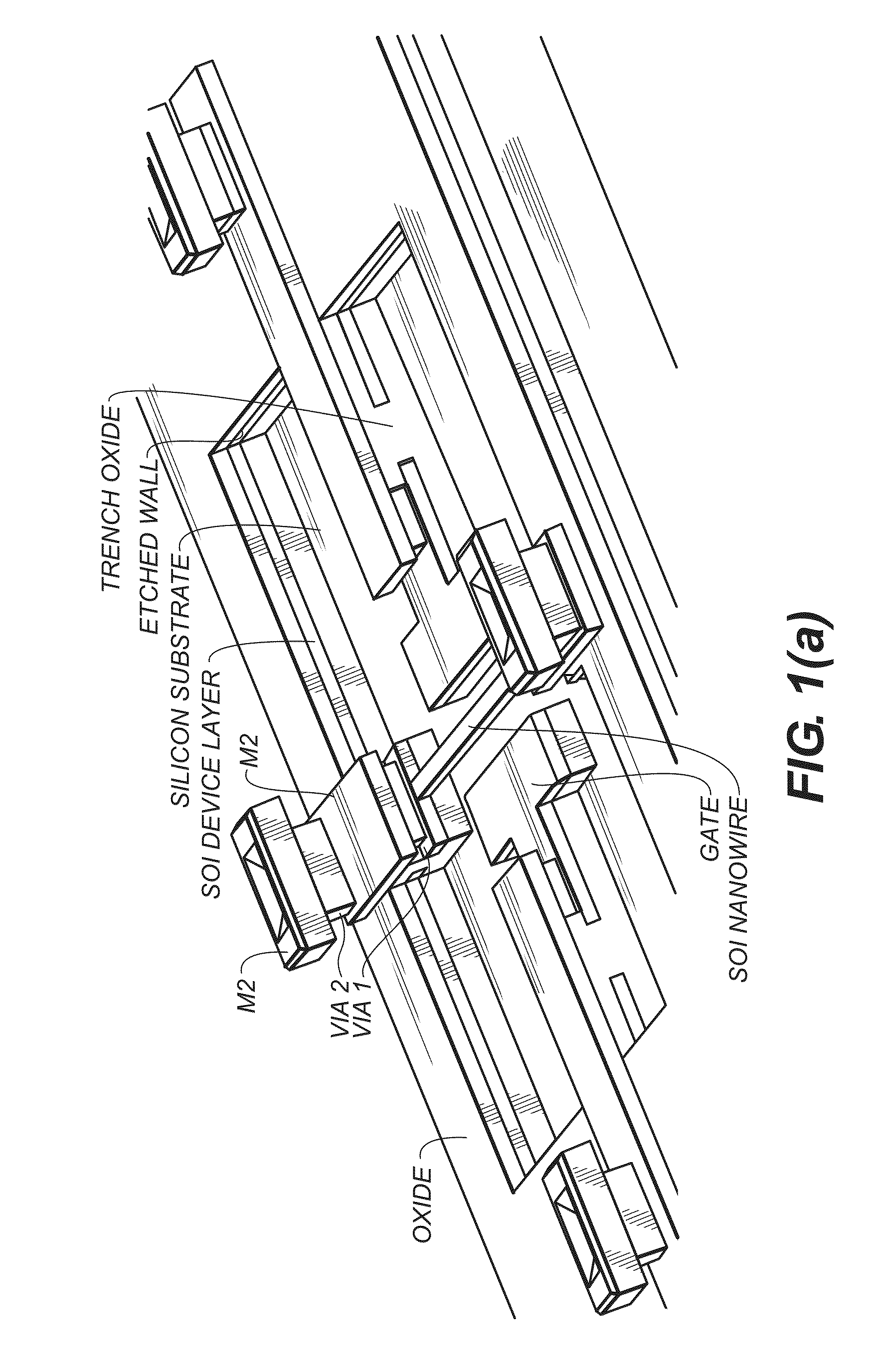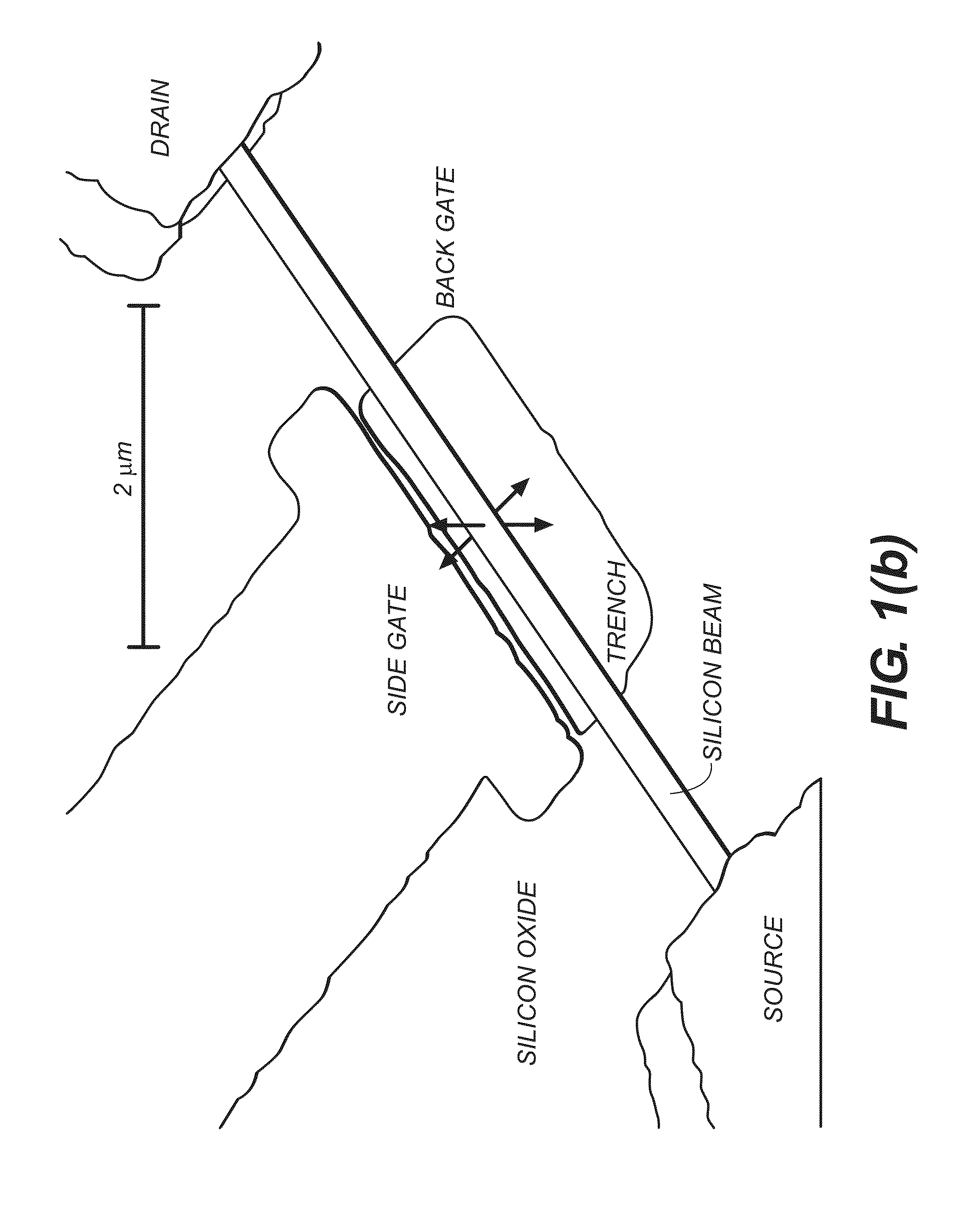Nanoelectromechanical resonators
a nano-electromechanical and resonator technology, applied in the field of resonators, can solve the problems of inability to manufacture and integrate devices as single-chip solutions in mass sensing or signal processing applications, inability to predict device design, and inability to achieve near-resonant response characteristics that are not easily reproduced and other problems, to achieve the effect of effective and economical manufacturing
- Summary
- Abstract
- Description
- Claims
- Application Information
AI Technical Summary
Benefits of technology
Problems solved by technology
Method used
Image
Examples
Embodiment Construction
[0048]For the purposes of promoting an understanding of the principles of the present disclosure, reference will now be made to the embodiments illustrated in the drawings, and specific language will be used to describe the same. It will nevertheless be understood that no limitation of the scope of this disclosure is thereby intended.
[0049]The present disclosure provides a method for design, development, and characterization of electrostatically-transduced nanoelectromechanical resonators using a top-down microfabrication technique, using a silicon-on-insulator (SOI) process flow. SOI-complementary metal oxide semiconductor (CMOS) technology is widely employed in the development of low-power digital microprocessors, such as those used in mobile computing and communication platforms. The selective nature of silicon / silicon dioxide (Si / SiO2) etching which enables the fabrication of these devices also allows for the development, implementation, and on-chip integration of SOI-NEMS. Thes...
PUM
 Login to View More
Login to View More Abstract
Description
Claims
Application Information
 Login to View More
Login to View More - R&D
- Intellectual Property
- Life Sciences
- Materials
- Tech Scout
- Unparalleled Data Quality
- Higher Quality Content
- 60% Fewer Hallucinations
Browse by: Latest US Patents, China's latest patents, Technical Efficacy Thesaurus, Application Domain, Technology Topic, Popular Technical Reports.
© 2025 PatSnap. All rights reserved.Legal|Privacy policy|Modern Slavery Act Transparency Statement|Sitemap|About US| Contact US: help@patsnap.com



